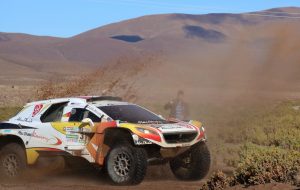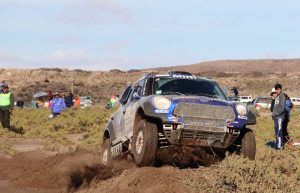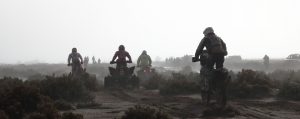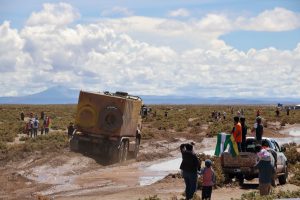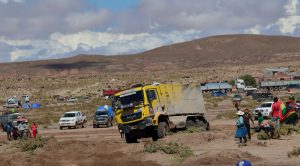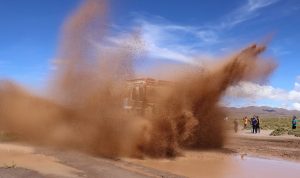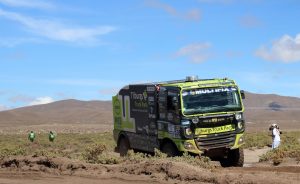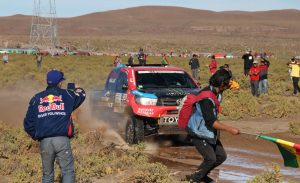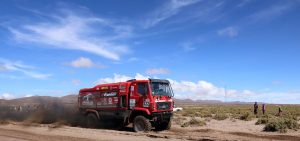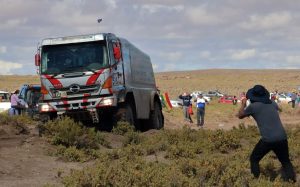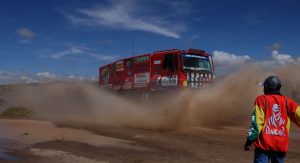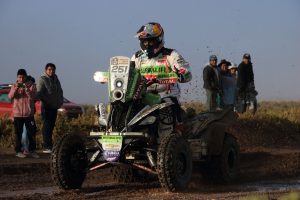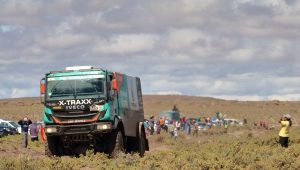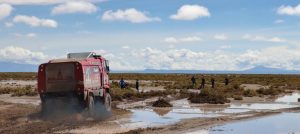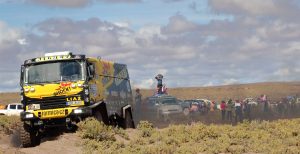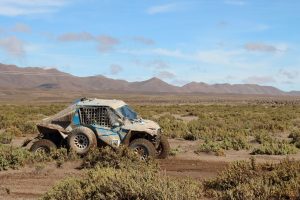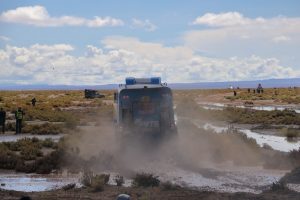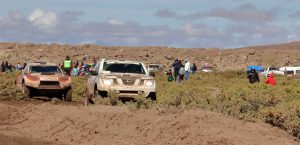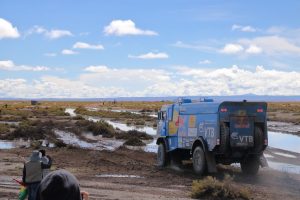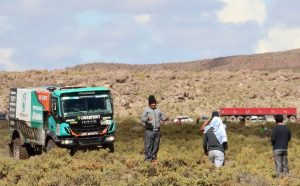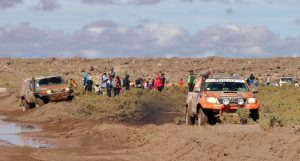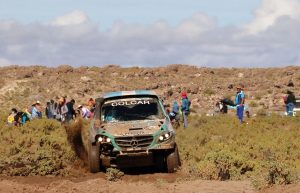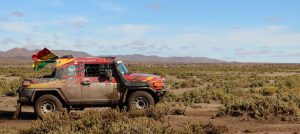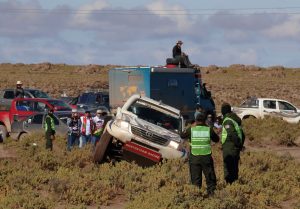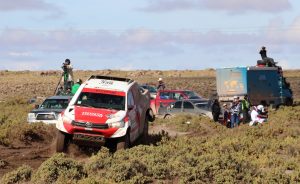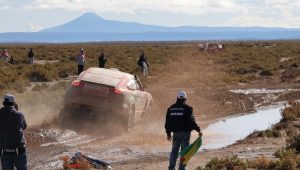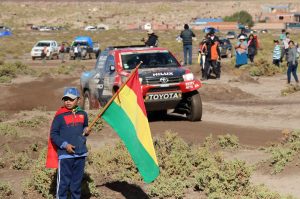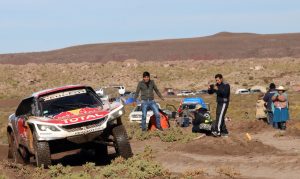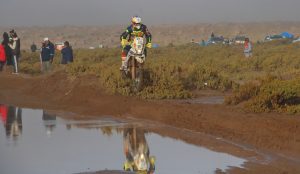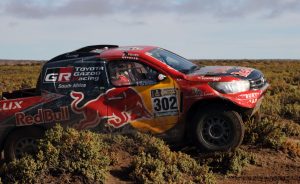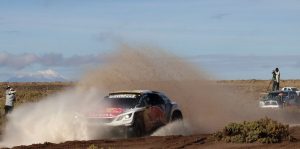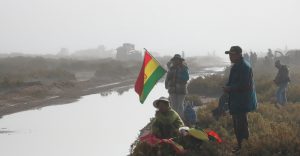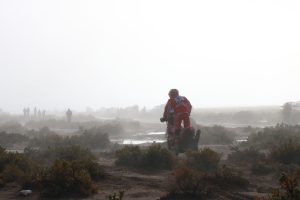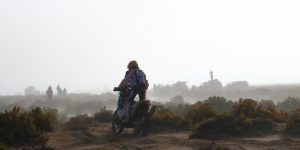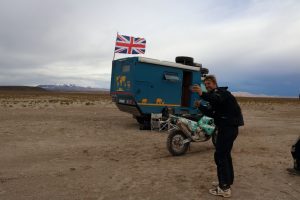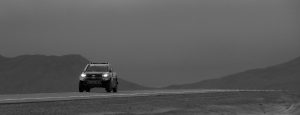No, we haven’t just upped-sticks and shipped to Africa, we’re in Bolivia for the world famous Dakar Rally 2017. After a load of security shenanigans in West Africa, the rally formerly known as ‘Paris-Dakar’ was shifted to South America where it’s affectionately known by locals as ‘El Dakar’. Here’s the story of our attempt at finding over 400 bikes, quads, cars and trucks charging across the altiplano in 2017, together with our Top Tips if you’re contemplating a trip to see Dakar 2018.
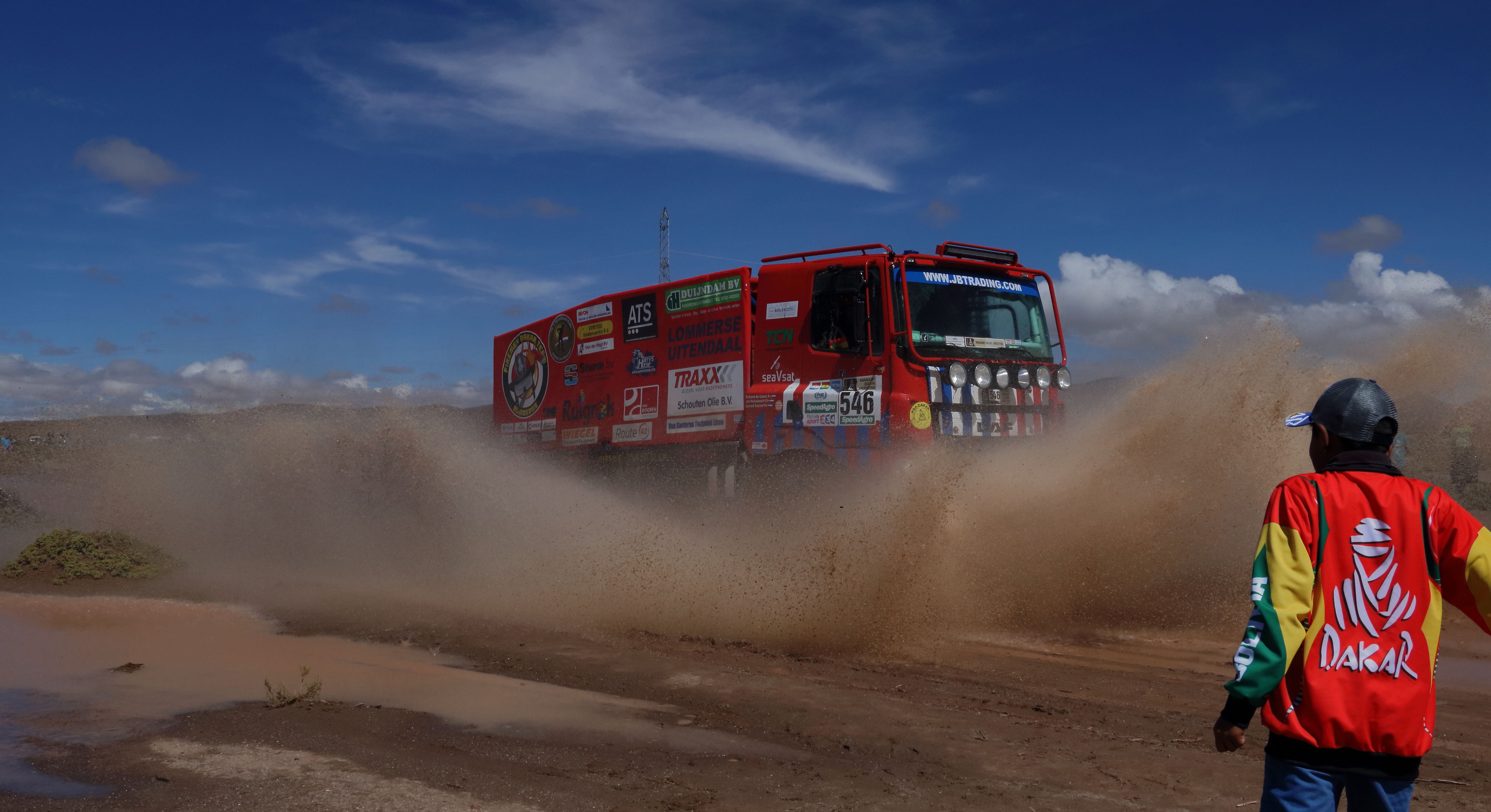
Finding the Dakar Rally
We’re on our way from Chile to Paraguay and it’s not just a stroke of luck that our route crosses with that of El Dakar; we have been looking forward to the Dakar Rally for ages! With the aid of a bit of inter-web gigery-pokery, we have hatched a cunning plan to see the rally in two key locations which should give us four opportunities to catch the event: Stages 6/7 (north bound arrival near Oruro and the next day’s departure to La Paz); and Stages 8/9 (southbound arrival in Uyuni and the next day’s departure for Argentina). This apparently simple plan however, turns out to be not quite as cunning as we first thought!
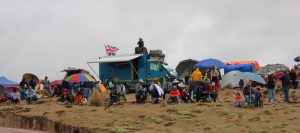
Camp No.1 – with cold, wet friends!
First problem is the extremely small amount of detailed information released to the public about the exact route of the Dakar Rally. Sure… they put a ‘map’ (such term being used in the loosest possible sense of the word!) on the website, but it is so hideously vague that it’s impossible to tell for sure which tracks the Rally will take. The Dakar Rally chaps no doubt have their good reasons for this, but it creates challenges for even the most enthusiastic spectator.
Competitors cover the most exciting and challenging sectors of the rally on remote tracks in full-blast race-mode, but they also do considerable distances on more established public roads for the rather dull, non-race transit sectors. No prizes for guessing which sectors most spectators want to see! Another complicating factor is that not all categories of vehicles follow the same route for the whole race. On some sectors, the bikes and quads split from the cars and trucks, so to get the full ‘Dakar Rally Experience’ you need to find a sector where all categories will pass.
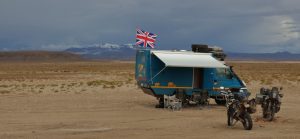
Camp No.3 – awaiting guests on the Tea Stage
Our provisional tactic is to arrive 24 hours ahead of schedule in the general vicinity of the Stage 6 race-sector nearing Oruro. Here we can ask the locals and drive around the area to see what, if any, infrastructure is in place to indicate exactly where the rally will pass. Unfortunately, our investigative tactic produces a big fat Zilch of results. The locals know nothing and we meet car loads of Bolivians that have driven over 600 km across their own country with just the same plan as us! Some of them flag us down and, assuming that Cuthbert is some kind of official vehicle, quiz us on where they can see El Dakar!
We’ve heard that the route is a closely guarded secret until last minute, but with only 12 hours to go, the many car-loads of fans are getting a bit desperate for clues! Just to add a hint of insult to injury, the official website is encouraging fans to get out there, but omits to mention where. #justalotfrustrating !!
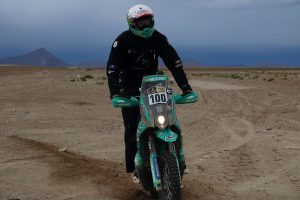
Lyndon – break in a looong transit-stage
Finally, after hours of hunting around, we stumble across a location by a bridge river-crossing with two camps of Bolivian families. These guys claim to have some inside information from their motor club in Cochabamba and seem 100% convinced that this is the location to see a race-sector of El Dakar. Bingo! We bag ourselves a spot for the night, with a great vantage-point view of the bridge where all the vehicles will (allegedly) come careering across sometime tomorrow.
There are five Brits competing this year, all bikers. Diligent followers of our blog may recall that in November we met one of the British competitors, Lyndon Poskitt, transiting through north Peru on his way to the rally start. Lyndon is competing as an individual in the Malle Moto (Motorbike, unsupported) category, so now we have a favourite racer to cheer on when we catch them blasting past us tomorrow!
Dakar Disappointment (No.1)
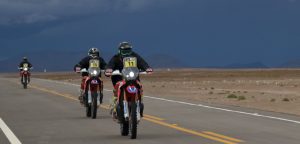
Random bikers – transit to Uyuni
Soon after we park-up, we notice that word seems to have spread about this location. In no time at all, the area is heaving with Bolivian families putting up tents, mostly home-made makeshift tarpaulin contraptions. The area is a bit crowded, but the volume of people gives us a glowing reassurance that we probably have the right place now. We have a slight feeling of unease when we learn that some of them are here purely because they have seen us here. Despite our protests of knowing nothing, some seem to be operating under the highly misguided notion ‘The English are here… it must be the right place’. Gulp. No pressure on us then!
Unfortunately for the masses, at dusk the rain comes in with winds whipping up their efforts at home-made tenting. We’re fortunate to be able to retire into Cuthbert whilst the rain continues through the night, but the many poor groups camping around us really aren’t well equipped for the conditions. By morning, many are soaked through and those who aren’t have only plastic-bags to keep them dry, but it doesn’t seem to dull their spirits!
Throughout the morning more groups arrive, the sun finally comes out and there is a fun, fiesta atmosphere. We guesstimate that there are now around two hundred people camped-up in the area. They are all waving their Bolivian flags and give us cheer when we raise our Union Jack above Cuthbert to support the Brit competitors. Anticipation and excitement amongst the crowd rises towards 11:00 hrs when the first racers are expected to charge past. Suddenly… everyone who has been monitoring their smart-phones for live-feed race updates, shout out in dismay… it is just announced on the ‘Dakar Rally App’ that this race sector has been cancelled due to conditions on the route 🙁 Arrgghhh!!!
A wave of disappointment rolls across the crowd. It seems that the competitors are now heading along the main Uyuni-Oruro highway some 50km to our east, in non-race mode. Bugger!
Dakar Disappointment (No.2)
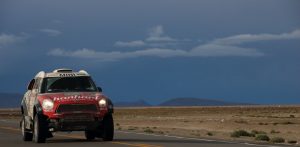
Dull, this transit stuff
Not long after this cancellation, we make a giant leap forward in our sourcing of Dakar Rally information: it turns out that there is much more information on the Dakar Official Spanish language website than there is on their English language website. Baffling… but there you go! This gives us some helpful clues for a good spot to watch the first leg of Stage 7 tomorrow. Again, we find a great vantage point on some raised ground above the track where all classes of competitors should come racing past. We settle down for the night, happy bunnies, cautiously optimistic that tomorrow should make-up for today’s disappointment.
Early in the morning we wake-up on cue, nice mug of tea in hand, ready to see the first wave of racers come blasting past on their departure to La Paz. But wait… what’s this? An update on the Dakar Rally App… Whaaat??? Cancelled AGAIN!! Drat!! 🙁 We’re disappointed, but we feel even more sorry for the hard-core Bolivian fans who are really gutted. They have taken days off work, dragged granny and the kids many miles across Bolivia and camped out for two nights in cold, soggy conditions with the (not unreasonable) expectation of seeing their beloved ‘El Dakar’… all in vain.
Anyway… chipper-up! We have two more chances. In two days’ time the race has a night-stop in Uyuni between Stages 8 and 9, so… clutching at straws… we drive the 250km south.
The Tea Stage
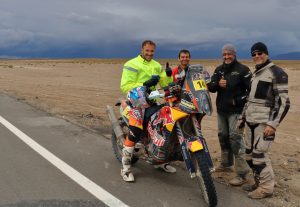
Tea time… with Sam Sutherland!!!
In Uyuni we meet up with Tony and Nigel, some Brit biker friends of Lyndon Poskitt. Together we head north to what we hope is the Dakar Rally track arriving in from La Paz. All a bit déjà vu… great position, lots of fans driving around… you get the scene 🙂 But… true to form… next morning, the inevitable Dakar Rally App Update… route changed! The rally will no longer come down this track, it will route down the parallel tarmac-superhighway into Uyuni. Okay… it’s only 10km west of where we are now, but as it’s on a main highway there’ll be no racing and we’ll only see them cruising past on a transit-stage. Disappointing, but better than nothing!
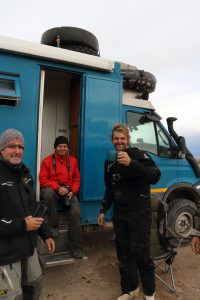
And Lyndon drops by for a cuppa too!
We move over to the highway with our Union Jack (again!) raised above Cuthbert ready to cheer on the Brits. There is a strong wind which displays the flag nicely, but it’s very cold; we keep adding more layers of clothes as we wait for the first racers to pass. Finally we see a day-glo yellow biker figure closing-in down the long straight towards us. Da da dahhh! The biker slows down as he approaches and veers off the road towards us! Blimey! It’s only superstar Sam Sunderland, the British rider in the KTM team who’s been leading the race for the last few days!
He saw the flag and stopped off to say hello! He’s been riding into the cold wind for hours and we offer him a nice cup of hot tea to warm him up for the final run into Uyuni. What a thoroughly nice chap! We hope he can keep his lead all the way to Buenos Aires and (we believe) be the first Brit to win a Dakar Rally.
Lots of the racing bikes, quads and cars pass by tooting and waving as they go. Then, in the distance we see bike No. 100 approaching… Lyndon Poskitt. Like Sam, Lyndon has also seen the flag and stops by for a chat and a warm-up cup of tea. His friend Tony, who has been with us since Uyuni, makes a short video for Lyndon’s Facebook blog before he zips off for the last 30km of the transit (click here for video Lyndon’s tea with Cuthbert!).
We’re thrilled to have met (and made tea for!) two top racers today. Had Sam and Lyndon been on a timed race for this sector, they would obviously never have been able to stop for a chat, BUT we still haven’t seen one of the elusive Dakar Rally race-sectors yet 🙁 Maybe it’s not meant to be, but we’re going to give it one last try!
Last Chance Saloon
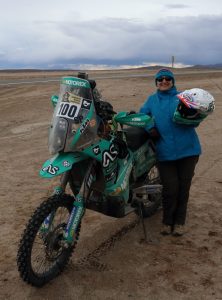
Swapped his bike for a cup of Yorkshire Tea! Thanks Lyndon 🙂
After catching the guys on the north side of Uyuni, we have to move fast to by-pass their overnight camp. We drive 80km south on a dirt-track ready to catch them at the start-line of the race-sector early in the morning. If we miss this Stage 9, there is no way we can catch them up to see the following stage in Argentina, so we really are in Last Chance Saloon now.
To get there we have to pass through Uyuni town which is set-up to receive the Dakar Rally Heroes at the end of their long slog from La Paz. Non-race vehicles are being directed by police around the town, however they mistake Cuthbert for a Dakar Rally competitor! Amusingly, we are directed down the cordoned-off streets towards crowds of waving and cheering fans! They wave flags and cheer us through, jumping out to take selfies with Cuthbert and thrusting babies at arms length up to our windows. It’s all good fun, but we do feel ridiculous imposters as we wave back sheepishly on our way across town!
By the time we arrive at the designated coordinates in the middle of nowhere, it is pitch black. We shine Cuthbert’s headlights down into the area where they are expected to start their off-road race-sector and our hearts sink into the mud… we see nothing but swamp! These conditions look far worse than the previous tracks on which the race had been cancelled due to ‘unpassable conditions’. We really can’t see the race-sector coming through this route in the morning and totally expect another ‘Dakar Rally App Update’ in the morning. Nevertheless, we find a place to park-up for the night and set our alarm in time to set-up for the 07:00 hrs published start time.
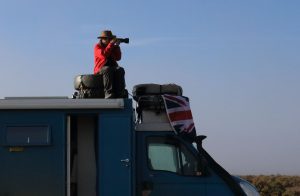
Last Chance Saloon – ready to shoot!
Rise and shine… at 06:30 hrs we are back to the designated spot, now heaving with specatators. Oooh… looking hopeful! In day-light we can see that there is a route for the racers through the swamp and Marcus manages to navigate Cuthbert through the slowly gathering crowds. Unlike the previous attempts, we haven’t had the luxury of arriving early to find a great spot, but we manage to find a reasonable place and set-up… yet again!
As we are parking-up we hear some bikes whizzing past on the track but without looking too closely, we dismiss them as local lads having a play on Ruta Dakar; the race doesn’t start for another 30 minutes. But hang on a minute… these are the actual Dakar Rally racers! And we have missed the first bikes to be released on the timed race-sector! More importantly, we have missed seeing Sam Sunderland lead off in race-mode!! Oh FFS!!! For reasons best known to God knows who, the race has started so far in advance of the published time that the police security patrols are still deploying to (admittedly, in vain) control the crowds and the TV crews are still setting-up!
A race at last!
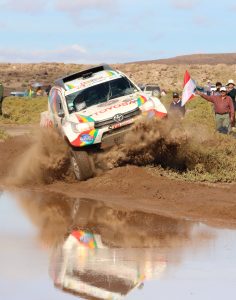 Anyway… setting aside our whinges about El Dakar’s public relations skills, we have only missed the first few of the (now) 300+ competitors so we settle down to see the rest of the race get underway.
Anyway… setting aside our whinges about El Dakar’s public relations skills, we have only missed the first few of the (now) 300+ competitors so we settle down to see the rest of the race get underway.
First are the bikes, followed shortly by quads, later come the cars and small trucks, then finally the monster-trucks. It’s a timed race, so each vehicle is released individually over the start-line in sequence according to his performance in the overall rally so far. Each driver is obviously keen to get going and gain an early lead for the day, however they have two sets of obstacles as they blast off: first the large areas of standing water and secondly the crowds wandering between the wet-bits.
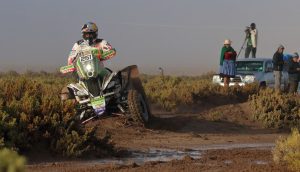 It is not entirely clear to us why many of the racers avoid the standing water and take detours over very rough, slightly higher ground. But what do we know? 🙂 Lots of them are doing it, so it must be the thing to do. The problem is that by diverting around the water, they encroach further into the ground occupied by wandering spectators. As Brits coming from a world where ‘elf ‘n safety’ is King, we find the total absence of crowd control rather shocking. A couple of police officers wander around and occasionally wave their arms in a random fashion, but nobody pays any attention. Happy-snapper photograhers mosey across the tracks as the racers blast through. Couples jump in front of the vehicles to take selfies and even small children are set-loose to get a closer view of the racers whooshing past.
It is not entirely clear to us why many of the racers avoid the standing water and take detours over very rough, slightly higher ground. But what do we know? 🙂 Lots of them are doing it, so it must be the thing to do. The problem is that by diverting around the water, they encroach further into the ground occupied by wandering spectators. As Brits coming from a world where ‘elf ‘n safety’ is King, we find the total absence of crowd control rather shocking. A couple of police officers wander around and occasionally wave their arms in a random fashion, but nobody pays any attention. Happy-snapper photograhers mosey across the tracks as the racers blast through. Couples jump in front of the vehicles to take selfies and even small children are set-loose to get a closer view of the racers whooshing past.
These unpredictable obstacles must be a living nightmare for the drivers and it is truly a miracle that nobody gets mashed in the process. Watching El Dakar is great fun… but dangerous fun, and you need your wits about you as each competitor takes his own rather unpredictable route around the water.
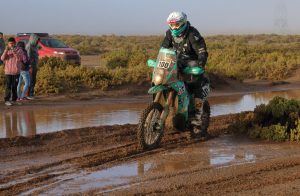
The race is thrilling as trucks, after cars, after bikes come haring through and we really enjoy it, finally our fourth time lucky! From the trackside the pace looks very fast, but we haven’t really managed to capture the speed in the pictures and video. Although it all seems super-speedy to us, we guess that given the conditions, they must surely be operating at less than maximum tempo. We wonder how much faster they would shoot past if we could see them away from the mobile obstacles.
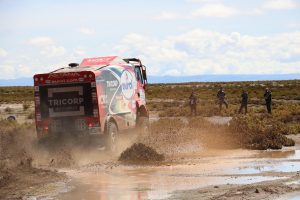 By around 11:00 hrs, all the competitors have passed and are off on the long stage down to Salta in Argentina. Bearing in mind that the first bikers started at 06:30 hrs, we see on the Dakar App in the evening that at 21:30 hrs not a single vehicle had reached the finish line. That’s a gruelling stage by anyone’s standard and it’s what makes the Dakar one of the most notoriously tough and exciting rallies in the world.
By around 11:00 hrs, all the competitors have passed and are off on the long stage down to Salta in Argentina. Bearing in mind that the first bikers started at 06:30 hrs, we see on the Dakar App in the evening that at 21:30 hrs not a single vehicle had reached the finish line. That’s a gruelling stage by anyone’s standard and it’s what makes the Dakar one of the most notoriously tough and exciting rallies in the world.
Doing Dakar Rally 2018?
So what can we conclude on the whole Dakar thing? When we managed to catch up briefly with Lyndon Poskitt for his cup of tea on the transit stage to Uyuni, from the competitor’s perspective he could not have been more complimentary about the organisation and staff. A couple of days later his praise seemed to wane slightly when, from his video blog we learn that his Dakar-provided safety-bleeper had failed. They were unable to provide him with a replacement and he was forced to continue the race without a piece of safety-critical equipment.
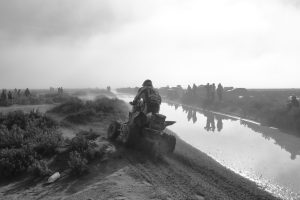 It can probably be gleaned from our tales of woe above that from our spectators’ perspective, the words “pi**-up” and “brewery” could be put to good use here. Despite enthusiastic Facebook posts encouraging specators to get out and support the race, Team El Dakar really doesn’t make it easy to find exactly where this mission might be accomplished! Clearly it is not their fault if conditions force route changes, but timely and effective communication to help the fans see the stuff is distinctly lacking. We know for sure that many cold, wet and disappointed Bolivians drove a very long way to see not a single Dakar truck, when a very small re-routing of a transit-stage on a tarmac road could have given them all a big smile to take home.
It can probably be gleaned from our tales of woe above that from our spectators’ perspective, the words “pi**-up” and “brewery” could be put to good use here. Despite enthusiastic Facebook posts encouraging specators to get out and support the race, Team El Dakar really doesn’t make it easy to find exactly where this mission might be accomplished! Clearly it is not their fault if conditions force route changes, but timely and effective communication to help the fans see the stuff is distinctly lacking. We know for sure that many cold, wet and disappointed Bolivians drove a very long way to see not a single Dakar truck, when a very small re-routing of a transit-stage on a tarmac road could have given them all a big smile to take home.
If you plan to (attempt to) see a race-stage of Dakar 2018, then be sure to take an advance of your annual allocation of luck and good fortune for the rest of 2018. ‘Eggs in one basket’ is not a viable tactic; flexi-tactics are the order of the day. Aim for at least two or three potential opportunities on the published route. Don’t rely purely on local information… Dakar ensures that locals are unlikely to be ‘in the know’!
Check all available sources of internet information and stay on-line on the Dakar Rally App throughout the race , so you can glean what little information they deign to publish. Get a good map of the area to check potential routes against the vague information found on-line and, when you optimistically think you have found the right area, arrive early on the previous day to bag your spot. Expect the unexpected and if, after all that, it’s your lucky day… then expect amazing! 🙂
Link to next blog: Bolivia: Celebrities and Wine Link to full South America home page
Dakar 2017 Picture Gallery and Video
- And Lyndon drops by for a cuppa too!
- Dull, this transit stuff
- And Lyndon drops by for tea and a selfie
- Lyndon – looong transit-stage
- Tea time… with Sam Sutherland!!!
Video

